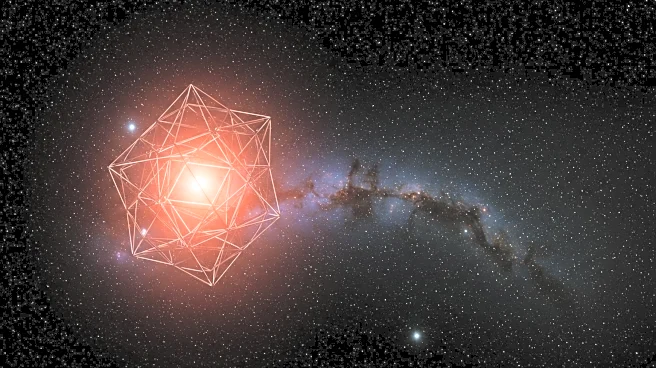What is the story about?
What's Happening?
Mathematicians Claudia Fevola and Anna-Laura Sattelberger have published research exploring the use of algebraic structures and positive geometry to unify physics across scales, from subatomic particles to the cosmos. Their work, featured in the Notices of the American Mathematical Society, delves into how algebraic geometry and combinatorics can decode fundamental structures of particle interactions and the universe's earliest states. Positive geometry, a novel field inspired by particle physics and cosmology, offers a geometric framework for describing particle interactions, complementing traditional quantum field theory methods like Feynman diagrams. This approach has implications beyond particle physics, aiding cosmologists in understanding the early universe through tools like cosmological polytopes.
Why It's Important?
The research signifies a potential shift in how mathematical frameworks can unify different branches of theoretical physics. Positive geometry provides a new language for understanding complex physical phenomena, potentially simplifying computations of scattering amplitudes and offering insights into the universe's formation. This interdisciplinary approach could lead to advancements in both physics and mathematics, influencing fundamental research and expanding the toolkit available to scientists. The work underscores the reciprocal relationship between mathematics and physics, where each drives the development of new ideas in the other, fostering innovation in fields like quantum field theory and cosmology.
What's Next?
The study is part of a growing international effort to explore the connections between algebra, geometry, and theoretical physics, supported by initiatives like the ERC synergy grant UNIVERSE+. The scientific community is tasked with further developing these emerging mathematical objects and theories, validating their applicability in real-world scenarios. Successful collaborations have already laid important groundwork, and continued research could lead to breakthroughs in understanding the physical world and advancing mathematical theory. The field of positive geometry, though young, holds promise for significant influence in both physics and mathematics.
Beyond the Headlines
Positive geometry is not just a mathematical curiosity but a potential unifying language for theoretical physics. It encodes the transfer of information between physical systems, mirroring how humans metaphorically understand the world. The mathematical sophistication spans multiple disciplines, involving algebraic geometry, algebraic analysis, and combinatorics. The formal objects studied, such as Feynman integrals and canonical forms of positive geometries, correspond to observable phenomena, enabling precision computations in high-energy physics and cosmology. This approach could redefine how scientists interpret and model the universe at all scales.
AI Generated Content
Do you find this article useful?











